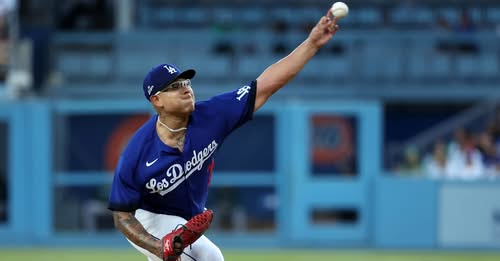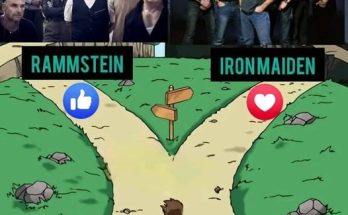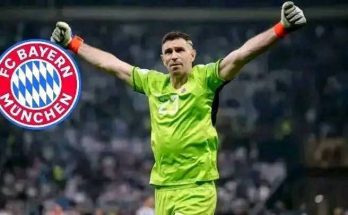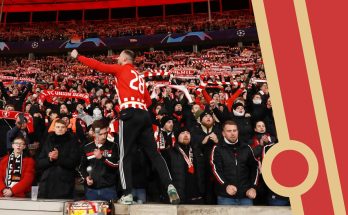Julio Urías’ baseball career teetered on the brink of collapse two years ago, when an evening outside a soccer stadium in Los Angeles culminated in an arrest and set off a chain reaction that would test his talent, his reputation, and the fabric of how teams approach free agency in cases of domestic violence. Nearly 21 months have elapsed since MLB first placed the left-hander on administrative leave in early September 2023, shortly after an altercation with his wife outside BMO Stadium following an LAFC match. That arrest led to a felony charge that was eventually reduced to a misdemeanor plea—Urías accepted a no-contest plea in May 2024 to domestic battery, accompanied by 36 months of probation, 30 days of community service, a 52-week mandated counseling course, restitution, weapon restrictions, and a protective order ([AP News](https://apnews.com/article/139f8977f38313cfe9079cc3168cb9cd?utm_source=chatgpt.com)). For someone who had once been the Dodgers’ wunderkind and a postseason hero, the fall was dramatic.
Two suspensions now sit on his résumé: a 20-game ban in 2019 under MLB’s domestic violence policy, and most recently a suspension lasting through the 2025 All-Star break after Commissioner Rob Manfred concluded the incident violated the league’s policy ([AP News](https://apnews.com/article/139f8977f38313cfe9079cc3168cb9cd?utm_source=chatgpt.com)). That decision, announced officially on March 21, 2025, means Urías will be reinstated from MLB’s restricted list on July 17, 2025—and only then will he be free to sign with any team ([MLB.com](https://www.mlb.com/press-release/press-release-free-agent-pitcher-urias-disciplined?utm_source=chatgpt.com)).
As July 17 draws near, the global baseball community is watching closely. Urías is 28—still squarely in his prime, with a career MLB record of 60–25 and a 3.11 ERA in 158 games (122 starts), including leading the NL in wins in 2021 and ERA in 2022, as well as the final out of the Dodgers’ 2020 World Series victory ([AP News](https://apnews.com/article/139f8977f38313cfe9079cc3168cb9cd?utm_source=chatgpt.com)). His once‑skyrocketing trajectory, the sort of profile that once pointed toward a \$200‑million contract, has instead encountered the full force of consequences. Whether those consequences will permanently taint his market value is up for debate.
Enter Scott Boras, the most prominent and polarizing sports agent in baseball. Boras, known for brokering generational contracts—like Bryce Harper, Gerrit Cole, and Juan Soto—is defending Urías as calls to multiple clubs reportedly materialize ([SI](https://www.si.com/mlb/dodgers/news/former-dodger-julio-urias-has-options-to-continue-career-says-agent-scott-boras?utm_source=chatgpt.com)). In recent comments to the Los Angeles Times and Sports Illustrated, Boras stated boldly that Urías “still has every intention to continue his career… he’s getting in shape… obviously he’ll have options” ([SI](https://www.si.com/mlb/dodgers/news/former-dodger-julio-urias-has-options-to-continue-career-says-agent-scott-boras?utm_source=chatgpt.com)). That optimism, however, belies a complex landscape.
On one hand, teams deeply desire left-handed starting pitching—always a premium. If Urías returns at even 80 percent of his prior form, he could slot into a mid-rotation role, or perhaps a high-leverage bullpen job, and provide strong value. On the other hand, the severity of his off-field conduct casts a shadow that may overshadow his arm. MLB organizations today are hypersensitive to public image, sponsor backlash, and internal team culture; signing a twice-suspended player comes with obvious risks. As one anonymous general manager reportedly put it to SI, “Teams want talent, but not at the cost of their reputation” ([SportsTak](https://thesportstak.com/baseball/story/mlb-suspends-ex-la-dodgers-star-julio-urias-amid-stunning-200-million-contract-buzz-3166998-2025-03-22?utm_source=chatgpt.com)).
Further complicating matters, Urías has been away from professional baseball for approximately 21 months. He hasn’t thrown in any competitive league—domestic or foreign—during that stretch ([Wikipedia](https://en.wikipedia.org/wiki/Julio_Ur%C3%ADas?utm_source=chatgpt.com)). That gap raises real questions about rust, stamina, and velocity. A pitcher returning from such a layoff would almost certainly need a ramp-up period, likely through a minor-league assignment or extended spring training, before he could be MLB-ready. Without recent performance data, clubs will be reluctant to offer significant guarantees.
The short and long of it is that, from a pure baseball perspective, Urías offers elite upside. But from a public relations and risk-management standpoint, he is a raw-not-on-paper asset, a talent weighed against the liabilities of stigma and uncertainty.
Nowhere is this tension clearer than in evaluating the contract Urías might command. Before his fall, he was projected to land a six- or seven-year deal in the \$150–200 million range. Today, that sort of longterm, high-AAV deal seems improbable. Teams, led by cautious analytics and brand-preservation strategies, prefer short-term, incentive-heavy deals for red-flagged players. A 1–2 year contract with modest guarantees—perhaps \$5–10 million base—with escalators tied to innings, performance, or conduct benchmarks would allow a franchise to hedge their bet. If Urías fails in MLB, or worse, brings further negative attention, the team is minimally exposed; if he excels, they still hold a multi-year option or free-agent advantage.
There’s also the question of whether Urías returns as a starter or transitions to a reliever role initially. A bullpen tryout limits innings exposure and gives teams flexibility to gauge his capabilities before committing to rotation duties.
And then there’s the possibility of an international stopgap. Since his suspension only applies to MLB, Urías could theoretically join a Japanese NPB or Mexican League team immediately upon reinstatement ([SI](https://www.si.com/mlb/dodgers/news/former-dodger-julio-urias-has-options-to-continue-career-says-agent-scott-boras?utm_source=chatgpt.com)). Such a stopover would serve as a showcase, allowing him to prove health, command, and PR compliance in a lower-stakes environment. Trevor Bauer, another lefty suspended under the same policy, followed that route—pitching abroad for three seasons but finding MLB doors nearly closed upon return (). Urías has so far stayed stateside, which suggests his and Boras’ intention is direct reentry into MLB.
Timing is also worth considering. Even if he signs mid‑July after reinstatement, he’d join teams during the dog days of summer, when playoff push rosters are being formed. A late-season bullpen addition or bulk relief role could be both useful and less attention-grabbing. An early 2026 spring training invite would also be plausible.
Victory in securing a deal will pivot on several factors beyond performance: evidence of commitment to counseling, community engagement, cooperation with MLB mandates, and media readiness. Teams will conduct their own diligence. Boras is likely orchestrating a narrative that Urías is rehabilitated and ready—he has a track record of rebuilding value for clients in tough circumstances—but the authenticity of that messaging remains to be seen.
If teams balk at domestic interest, Mexico is his fallback; that market was historically more lenient on players with off-field issues, and could offer a showcase platform without MLB’s constraints. From there, a year of domestic success could set up a 2026 North American reentry.
The opponent across from Urías in negotiations is the market itself. The supply of skilled pitchers remains vast. Clubs can target defensively-minded starters, cheap reclamation candidates, or non-controversial veterans. A rebuilt Nationals, rebuilding White Sox, or Marlins—clubs willing to gamble—may offer opportunity; high-profile franchises like the Mets or Yankees could, too, but only if the calculus shifts in Urías’ favor.
So what does Boras want? He’s likely aiming for a “show me” deal: enough guaranteed to anchor Urías but with outs that protect teams. It might look like a two-year, \$20–30 million package with heavy performance and conduct thresholds. Boras is seeking leverage by referencing multi-team interest, forcing clubs to weigh opportunity cost. If nothing bites in MLB, then taking a deal overseas remains viable, and the clock ticks toward 2026.
But a failed 2025 stint—poor results, renewed scrutiny, or another incident—would likely land Urías permanently out of MLB. It’s a tipping point scenario: redemption or fade. That this moment coincides with Boras’ offseason moves—Pierre Alonso, Alex Bregman, Corbin Burnes, Sean Manaea, Juan Soto—makes it clear Urías is a test of Boras’ brand and influence ([Reuters](https://www.reuters.com/sports/winter-meetings-scott-boras-feeling-positive-about-clients-2024-12-11/?utm_source=chatgpt.com)). If Boras cannot place Urías this summer, it would erode the aura around his agency. He needs a client who can re-emerge after scandal—and the timing is now.
For Urías, the reinstatement week arriving July 17, 2025 is the dawn of the next chapter. His talent remains elite; if he’s receptive to structure, transparent in rehabilitation, and effective on the mound, a contract—likely structured with short guarantee and performance lifts—will happen. If not, this moment could mark the end of his MLB story.
In the broader context of baseball, Urías raises questions about league policy, culture, and priorities. How do teams balance competitive advantage with social responsibility? Is elite talent worth the reputational cost? Do fans forgive a domestic violence history if a player redeems himself on the field? MLB’s past players—Chapman, Bauer, Germán, Russell, Osuna—took differing trajectories. Many remain on the margins. MLB appears willing to punish but less firm on reintegration strategy. Urías’ case may shape future policy: will MLB become a pipeline of redemption, or a closed circuit for those with marred paths?
The answers have ramifications for countless free agents who follow; does MLB represent a second chance league, or a one-strike policy? Urías might set the precedent. His age and background give him advantage that older, journeyman players might not receive. If he thrives, teams will remember. If he flops—or worst, reoffends—standing doors may slam.
Meanwhile, July 17 approaches. When the clock strikes, Urías becomes available. Boras will pitch teams with athletic upside. Clubs will vet his legal, rehab, and medical profile. A short-term offer, or a foreign contract, seems most plausible. Long-term at top salaries? Not unless Urías performs and behaves impeccably in 2025.
So yes, Urías has options—but those options must be earned, not assumed. His career until now was meteoric: teenage phenom, World Series hero, top starter. That arc is now interrupted by off-field failure. He has to prove he still belongs. Boras may open doors, but Urías has to walk through them.
And that leads to the conflicted sentiment we hear now: admiration in some quarters for his talent; outrage in others over his misconduct. Urías stands at a crossroads not just for his contract, but for baseball culture. Redeeming an elite player with urgent PR risk tests the sport’s capacity for forgiveness—or accountability.
At his best, Urías was a force on the mound. At his worst, he betrayed public trust. In this week’s reinstatement, both aspects collide. Will he produce MLB-caliber innings without jeopardizing his past? That’s what teams, fans, and Boras await. If he succeeds, he’s a comeback story. If he fails or offends again, he becomes a cautionary tale.
July 17, 2025 is simple on the surface—a date. But for Julio Urías, it’s a deadline: a return or extinction in the game he once dominated. His agent promises options. The world wonders if redemption is still purchasable in baseball’s marketplace of talent and values



